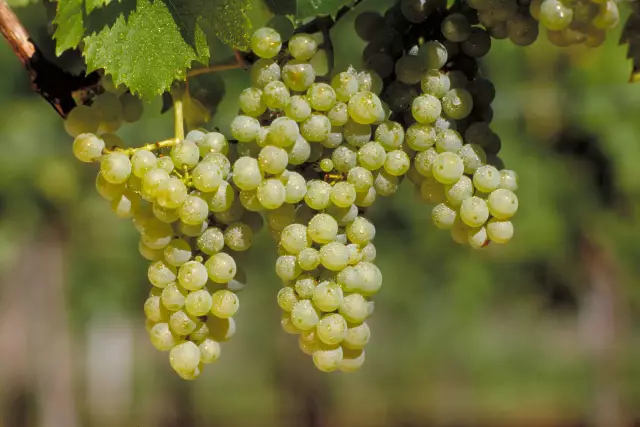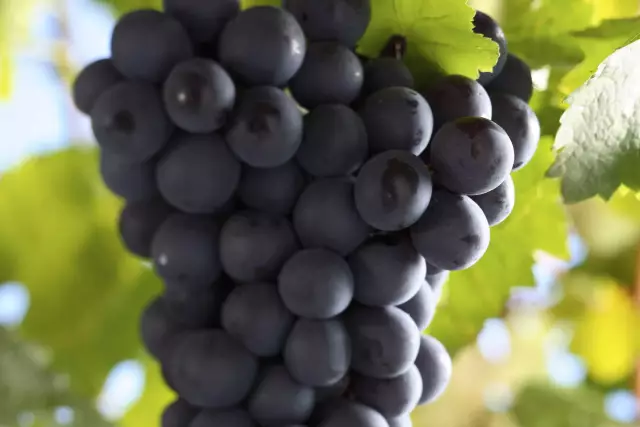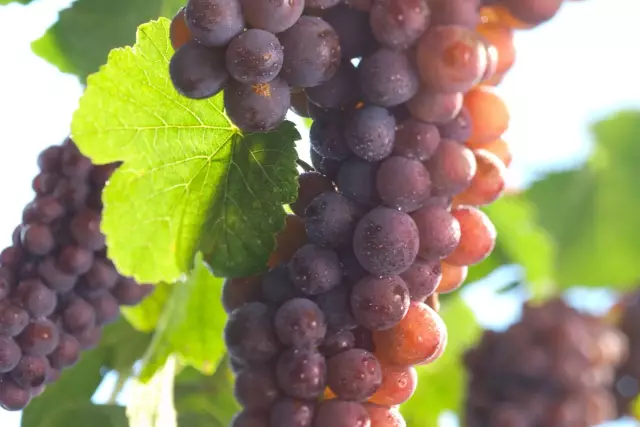Gutedel
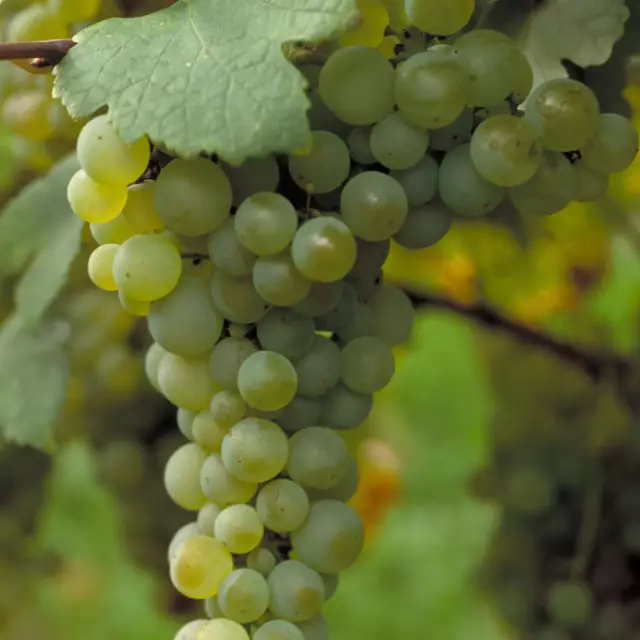
Known as Chasselas in France and Fendant in Switzerland, this ancient white variety is both a popular table grape and a wine grape.
Facts
-
1.048 ha
Hectares planted vinyard area 2023
-
5.000 years
Presumed age of the grape variety
Cultivation
Chasselas are content with averagely good sites, but they need to be protected from cold winds. Deep, not too dry soils are preferred, but the Gutedel also ripens on shallow rock weathering and limestone soils. The variety is relatively susceptible to peronospora, red burner, grape berry moth and stem rot. At medium-early maturity and average must weight, 100 hectolitres per hectare can be achieved on fertile sites. Higher quality allows for waiting in autumn, as the berries are not very susceptible to rot.
Significance
As a tasty table grape, the white (and the red) Gutedel is cultivated worldwide. For wine production, it plays a dominant role in French-speaking Switzerland, in Southeastern Europe the "Mädchentraube" is considered a Gutedel variety, and there are also a few vineyards in Alsace. In Germany, Gutedel cultivation is concentrated almost exclusively in the Markgräflerland region between Freiburg and the Swiss border. There, 1,048 hectares of vineyards (2023) are planted with the oldest cultivated vine. The South Baden speciality has maintained its cultivation area for decades. In addition, there are almost 22 hectares of vineyards in Saale-Unstrut that are planted with Gutedel.
Vinification and taste
The fresh wines taste best when drunk young; higher qualities have less ageing potential due to their distinctly low acidity. The young wines are often drunk with a morning pint or with a snack. Fine Chasselas wines are the perfect accompaniment to light cuisine such as dishes with sea fish or delicate cheeses. The mild nature of the wines also predestines Chasselas for enjoying with friends.
The special charm of Chasselas wines lies in the rather tasteless character of the grape variety. This means that the respective terroir, soil, microclimate and location of the vineyard are unmistakably expressed in each wine. Most Gutedel wines are made into light, drinkable wines. But there are an increasing number of specialities in the Prädikatswein range; dry wines that are sometimes given a particularly mild character through biological acid reduction. Chasselas wines are classified as very mild in acidity.
History
In 2000, the Markgräflerland region in the south of Baden celebrated a very special anniversary: the Gutedel grape variety native to the region was (approximately) 5,000 years old. It is thought to have originated in Palestine, and its cultivation on the Middle Nile 5,000 years ago is considered to have been vouched for. It is assumed that it was passed on to the Romans and Greeks by the seafaring Phoenicians. At the beginning of the 16th century, chasselas arrived in French growing regions. Southwest of Mâcon, the vines are said to have been cultivated near the village of Chasselas - an explanation for the Chasselas synonym that is still commonly used in French-speaking wine-growing regions today. What is certain is that Gutedel was planted on German soil at the beginning of the 17th century, first in Württemberg and Franconia, a century later in Saxony and south of Freiburg, today's Markgräflerland. It was not until the activities of Margrave Friedrich von Baden, who imported planting material from Vevey, a well-known wine-growing community on Lake Geneva, in 1780, that Chasselas became more widespread.
At a glance
- The grape variety is thought to have originated in the Middle East, with cultivation on the Middle Nile 5,000 years ago.
- At the beginning of the 16th century, the grape variety arrived in French growing areas near Chasselas.
- Prefers soils that are not too dry
- Medium-early maturity with average must weight
- Aroma: tasteless character that expresses the terroir
Where is the origin of the chasselas thought to be?
The origin of the chasselas is believed to be in Palestine.
White asparagus with pancake strips Asparagus with "Kratzete"
White asparagus with pancake strips and champagne butter sauce.
- 1kg Weißer Spargel
- 200g Mehl
- 4 Eier
- 150ml Milch
- 1TL Butterschmalz zum Braten
- 2EL Butter
- 1 Zitrone
- 1 Prise Zucker
- 1-3 Schnittlauchröllchen zum Garnieren
- 1 Für die Soße:
- 150g Butter
- 50ml Sahne
- 50ml Sekt
- etwas Salz und Pfeffer
Mix the flour with the eggs, milk and a pinch of salt to make a smooth pancake batter. Leave to soak for 30 minutes.
In the meantime, peel the asparagus and cook in salted water with 2 tbsp butter and a pinch of sugar until al dente. Drain well and keep warm.
<p
<p>Pour the pancake batter in batches into hot clarified butter
.
pour into hot clarified butter. When the underside is browned, use a fork to scrape into pieces. Finish frying until the pieces are golden yellow.
For the champagne-butter sauce, bring the cream to the boil, reduce slightly and stir in the cold pieces of butter (walnut-sized). Add the sparkling wine and season to taste with salt and pepper.
<p
<p>Arrange the asparagus on pre-warmed plates. Add the kratzete, drizzle with the sauce and garnish with chives.
<p
<p>Wine recommendation:
A mild and dry Gutedel or a delicate Kabinett wine from Riesling or Pinot Blanc.
- Gutedel (trocken)
- Riesling (brut)
- Pinot Gris (brut nature)
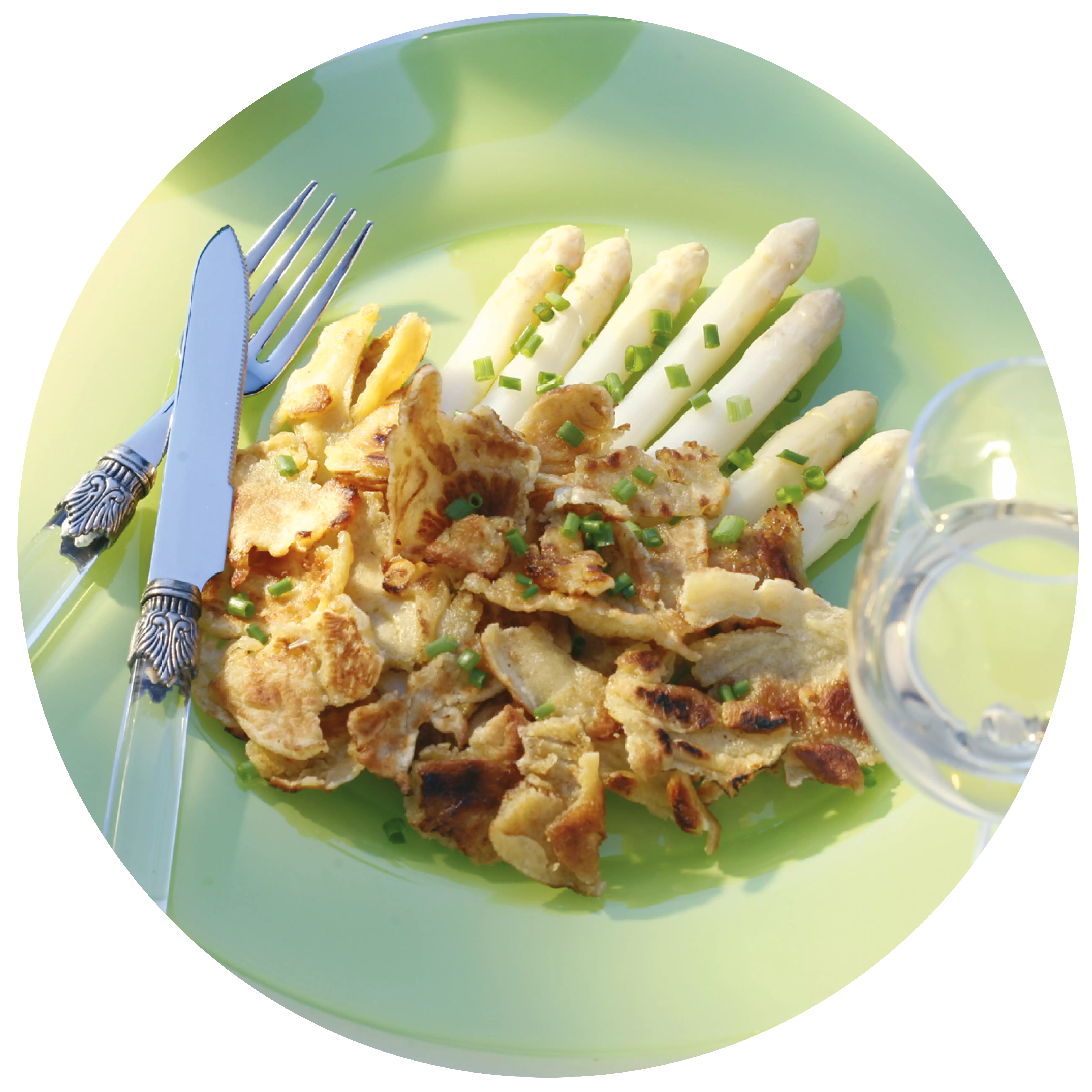
Wineries Wineries in the area
-
Show
Weingut Engler


